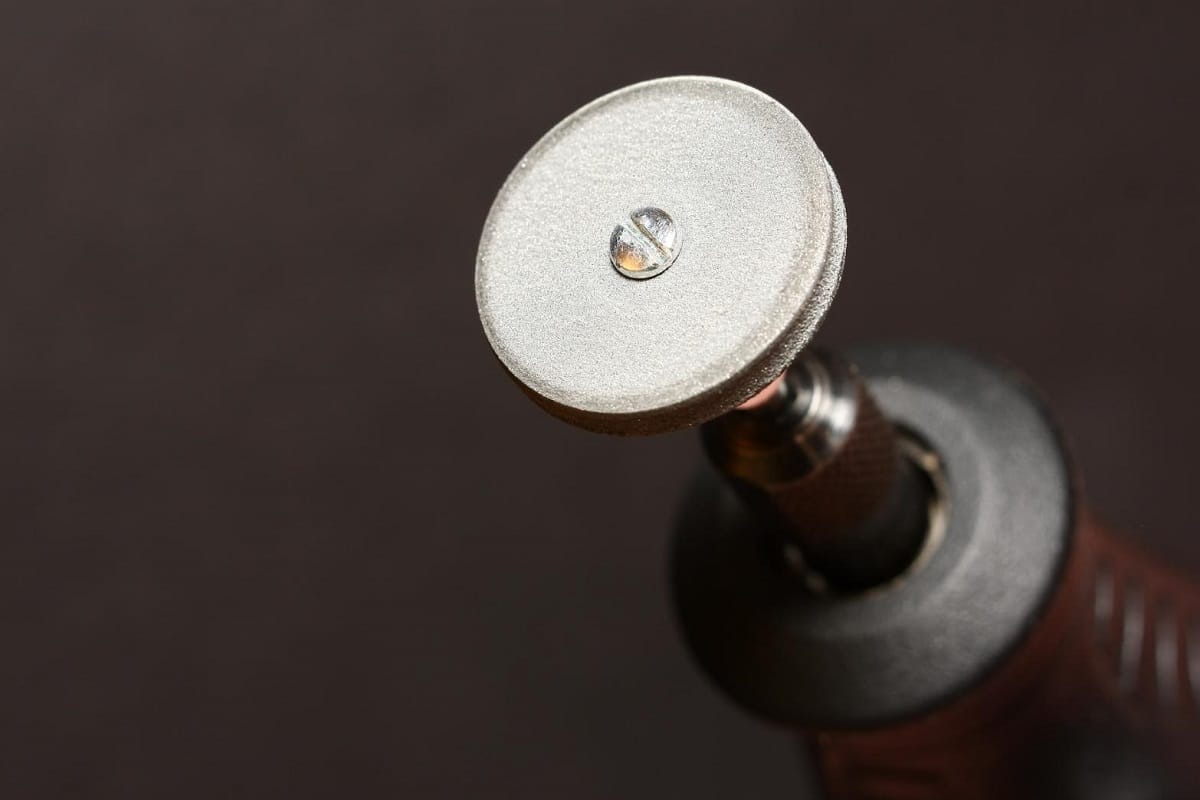Dremels are a very effective cutting and grinding tool, but like other power tools, they produce noise. Whether this is damaging to the ears is not necessarily clear, and depends on the precautions the user takes.
Are Dremels Loud?
It’s impossible for us to say exactly how loud a dremel is. That would depend on the type of dremel, the attachment being used, the speed at which it’s spinning and so forth… But there are some things you can check before using it to reduce any noise.
Dremels Cutting Metal Are Loud
Dremels cutting metal are perhaps the loudest. This can become very difficult for the user to bear if they are not wearing hearing protection.
Dremels spin at high speeds and the bearings cause noise in and of themselves. However when cutting metal, most of the noise is due to the small amounts that are slowly ground away by the blade or disc.
This will happen when cutting any type of metal and object, such as pipes or sheets. Some of this noise is due to the metal vibrating while it is being cut. One way to decrease the sound is to dampen the metal piece you are cutting using a towel and clamps or a vice.
Dremel Sound
What Do Dremels Sound Like?
A dremel produces a sound like other hand tools. Much of this sound is from the motor and spinning cutting bit which rotates at high RPMs (rotations per minute). A dremel sounds like a dental drill, or small hand drill or saw.

How Many RPMs Do Dremels Produce?
Dremels rotate between 5000 to 35,000 RPMs. Most dremels are adjustable speed so the RPMs will vary depending on how they are used. Since dremels are so small, a high RPM will make a louder sound.
What Does A Worn Out Dremel Sound Like?
A worn out dremel may produce noise due to worn its bearings and bushings. This can be a loud squealing sound that is hard to ignore.
If the dremel uses bronze bearings, then they will be able to hold oil to keep them lubricated. If they dry out over time, they can start to wear and make noise. To fix this, open up the dremel and drop oil where the shaft and bearings meet. Keep adding oil until the bearings can no longer absorb it.
If the dremel uses steel ball bearings and they make noise, they will need replaceing. The only way to know which type of bearing is inside requires opening up the dremel to see.
The brushes can also wear out, causing noise. Dremel recommends the brushes are changed after 60 hours of use. You can find out more in the Dremel troubleshooting webpage.
How Loud Is A Dremel Tool?
Determining how loud a power tool is means find out its ranking based on its Decibel (dB) rating. All power tools produce sound, and are often high in dB. This is why it is important to alwasy wear ear protection when using hand tools such as dremel cutting tools.
How Many Decibels Are Dremels?
Dremels are smaller than hand power drills, which produce on average 90-100 decibels. This could place them at around 80-90 decibels. This places them near the sound of a gas powered lawnmower, but less than a powered hand tool, such as a circular saw.
A damaged dremel or one used to cut metal may produce a higher sound. 85 decibels is the highest level for safe hearing over an 8 hour day. To protect yourself, always wear hearing protection when using a dremel.
Highly Rated Ear Protection
Amazon Basics Noise-Reduction Safety Earmuffs Ear Protection, Black and Red
3M Pro-Grade Noise-Reducing Earmuff, NRR 30 dB, Lightweight and Adjustable
Professional Safety Ear Muffs by Decibel Defense – 37dB NRR
What Causes A Dremel To ‘Wobble’?
A dremel that wobbles or excessively vibrates could be due to internal wear and tear. It could also be because of pressing too hard while trying to cut or grind hard material. A wobbling dremel can be difficult to handle, and even cause the user to make crooked cuts or grind off too much. Open up the dremel and inspect the bearings and brushes to make sure it is not worn out.
How To Make A Dremel Quieter?
Since dremels are power tools, they are going to make some noise. But there are ways to make them quieter:
- If you have an adjustable speed dremel, you can decrease the speed. Lower RPMs will make less noise.
- When holding the dremel, using a firm grip around the central casing can decrease vibration, which will lower the sound level.
- An older dremel may have worn out bearings, or need oil. Open up the dremel and inspect the bearings. If they are too far gone, consider replacing them to make the dremel quieter.
To Conclude
Like other power tools, dremels produce noise that can, with enough time cause hearing damage. When using a dremel, always wear ear protection in the form of muffs or plugs, along with safety glasses and gloves.
